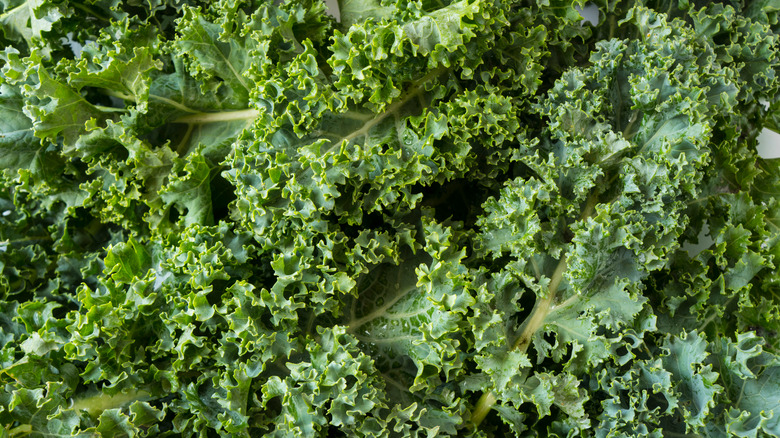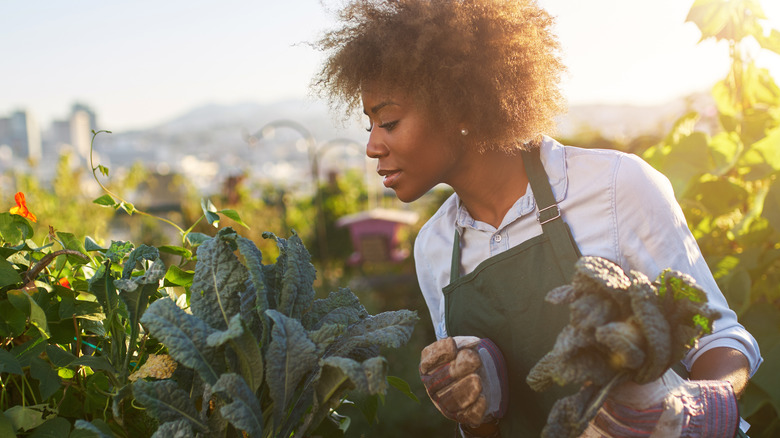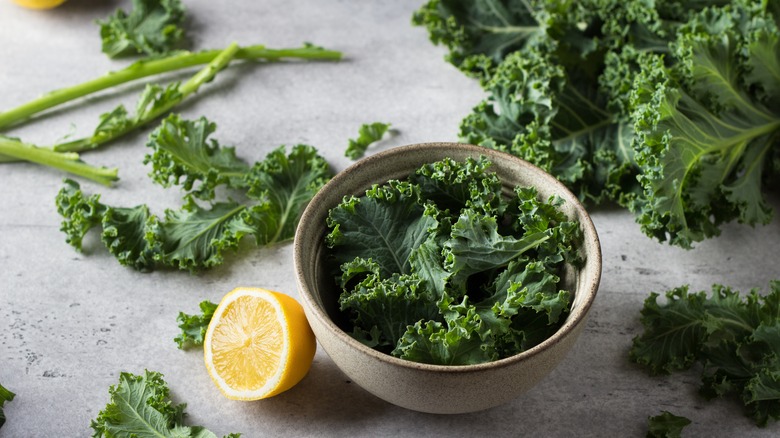Raw Versus Cooked Kale: Which One Is Better For You
Kale has grown in popularity over the past decade and has become somewhat of a cultural icon, complete with celebrity endorsements, social media hashtags, and even kale merchandise. Think back to the social media craze of the "KALE" Ivy League-inspired sweatshirt. Fashion aside, the kale trend taught us there are so many ways to love this nutrient-dense green, including blending, sautéing, massaging, and air-frying. But are some preparation methods better than others when it comes to optimizing nutritional content and absorption? Science suggests they are. But before diving into the science, let's highlight that kale's a member of the brassica species, similar to Brussels sprouts, broccoli, and cauliflower. Kale's considered a superfood by health experts due to its abundance of vitamins A, B6, C, K, calcium, copper, potassium, and manganese (via Mayo Clinic Health System). When scientists study the impacts of cooking kale and other brassica plants, they're typically considering nutrient and mineral breakdown and bioavailability (our body's ability to absorb those nutrients and minerals).
Nutrient bioavailability
A 2018 study in the International Journal of Food Sciences and Nutrition studied the effects of steaming, boiling, microwaving, pressure-cooking, and vacuum-cooking (sous-vide) kale. They concluded that all the cooking methods yielded a loss of antioxidants, flavonoids, minerals, and organic acids, compared to fresh kale, with the biggest adverse effect on calcium. Steaming was deemed the best way to preserve antioxidants and bioactive compounds. However, a 2019 study found that sous-vide may be the best method to cook and preserve kale's nutrients, particularly because of its ability to preserve vitamin C more effectively, according to the Journal of the Science of Food and Agriculture. P-coumaric and gallic acids, two important phytochemicals in kale, remained most stable when cooked via sous-vide. Both methods are considered gentler forms of cooking, and sous-vide in particular is a cooking method performed at low temperatures, suggesting the amount of heat and the amount of time the vegetable is exposed to heat can impact nutritional quality.
Digestibility
Raw kale may be harder to digest than cooked due to its fiber content, and if dietary fiber intake is increased too drastically, it can often cause digestive upset, according to SF Gate. If digestive upset occurs when eating raw kale, you may want to opt for a gentle steam, making the leaves softer and easier to digest. However, if you prefer to eat kale raw, consider cutting out the stem. The stem can be very tough and fibrous, making it even more difficult to digest than the leaves alone. Another healthy way to enjoy raw kale is to massage it. This is often done by chopping kale, adding it to a large bowl, drizzling vinegar or citrus over the top and squeezing the leaves with your hands and fingers. Acids and vinegar help break down the cellulose, thereby reducing its toughness, according to Bon Appetit. Since kale is such a fibrous vegetable, you can massage and then store it in the refrigerator for several days before it becomes unpalatable.


